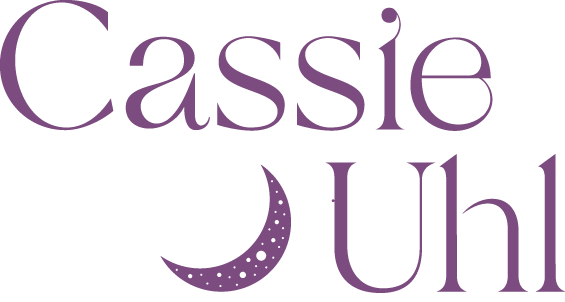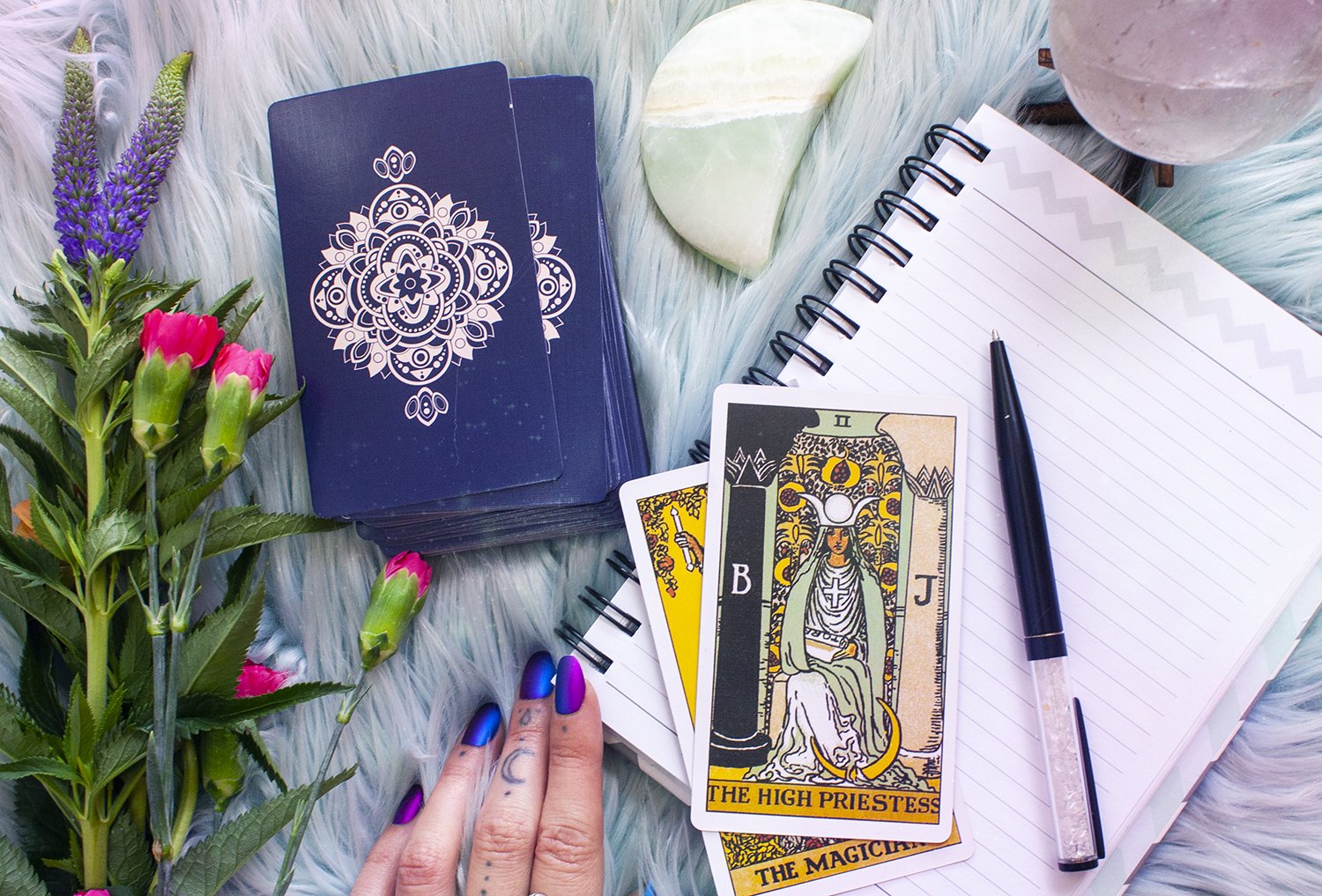6 Ways to Work With Your Tarot Cards Besides Divination
Divination is a fantastic way to work with the tarot, but you’re selling yourself short with your trusted tarot deck if you’re only using it to glean insights into the future. At its core, and in my opinion, the tarot is a powerful self-reflective tool. It’s here to share insights and guidance about what’s going on with you right now, at this moment. Telling the future is one of the most common draws to tarot, but the tarot truly brings a host of other benefits.
Read on for six ways to work with the tarot to grow and expand in new ways, aside from divination.
Working with Common Archetypes
The tarot is full of common archetypes that you will encounter or embody at different times in your life. Archetypes are timeless and universal energies that people can understand across cultures. For example, the archetype of the mother is something we can all understand on some level. Even if you do not have a relationship with your biological mother or have children of your own, the overarching energy of the archetype of the mother is something you can understand. Furthermore, you do not have to be a mother or a woman to embody the mother's archetype. Anyone can access and learn from the energy of motherhood.
The tarot is dripping with common archetypes, especially in the major arcana. The way the archetypes show up can be personal and vary from person to person. Most of the common archetypes appear in the major arcana, but they can also be found in the minor. Here are some of the archetypes I associate with the cards: the ego (the sun), soul (the moon), mother (empress), father (emperor), wizard (magician), child (the fool), lover (the lovers), martyr (hanged one), seer (hermit), and authoritarian (hierophant), etc. You may decide on different archetypal associations with different cards, and that’s fine.
So, how can you work with the archetypes of the tarot? Lots of ways! You can explore how the archetypal energies associated with the cards make you feel, you can look at the symbology on each card and explore how it makes you feel about its archetype, you can journal about the cards and their archetypal connections, and you can layer it into how you interact with and understand the cards.
Journaling
Journaling allows you to dive deep into the meaning and energy of each card. You’ll better understand the lessons each card wants to offer you through journaling about them. Truth be told, I’m not a big fan of journaling. Journaling with the tarot is different, though. I always write when I pull cards for myself. To begin journaling with the cards, you can work through them one at a time in order or intuitively select a card to journal about. Here are some suggestions for questions to ask yourself when you’re journaling about different cards:
How does this card make me feel?
What symbols or imagery jumps out to me?
Are there any archetypes or human themes that stand out to me in this card?
How does this card show up in my life right now?
What can I learn from this card?
Energy Readings
If you’ve followed my work long, you already know that I love all things energy! We are energy beings, and the tarot is another magical and beautiful way to work with your energy. What do I mean by this? Tarot is an excellent tool for reading your energy and understanding how to balance your energy.
Each card in the tarot corresponds with different energy. When you work with the cards specifically to assess your energy, the cards can act as a guide for what kind of energy you may need more or less of. Each card's energy can act as a signal that you either have too much or too little of that energy.
For example, if you pull some cards to determine what your energy needs to be more balanced and you pull loads of pentacles, that would be a sign that you need more grounding in your life to feel more balanced because the pentacles relate to the element of earth.
You could also consider pulling a card for each energy center or chakra in your body to get an idea of what each energy center needs to be in better balance. I dive into this more in-depth in my book, The Zenned Out Guide to Understanding Tarot.
Exploring and Understanding Common Correspondences
If you’re a visual learner, like I am, you’ll love working with the tarot to understand common correspondences better. I won’t spend too much time talking about this here because I already covered this in a previous post here.
Basically, each of the cards has a handful of correspondences (correspondences are simply energies that match or “play well together.”) The most common correspondences are the elements, astrological energies, and numerology. I’ve found that using the tarot as a tool to understand different types of energies better is immensely helpful, especially for visual learners. The cards' symbology and meanings will add a depth of understanding to your astrology, numerology, or elemental practice. You’ll also learn the tarot card meanings faster as well.
Shadow work
The cards of the tarot contain a complete range of human experiences. It does not gloss over the hard, scary, and sometimes earth-shattering parts of life. This is one reason why, I believe, so many are nervous about diving into tarot. It’s also why it can be such a powerful healing tool.
Your cards will not shield you from your shadow. Instead, they call you to cozy up to your shadow to understand better what it has to teach you. If the idea of shadow work is new to you, check out this previous post to learn more about what shadow work is. Here are a few ways to dive into shadow work using your tarot card deck.
Journal about the cards that make you the most uncomfortable. Use the questions above from the journaling section.
Ask questions specifically to explore your shadow, like “What parts of my shadow need healing and exploring?”, “ What do I have to learn from my shadow?” or “What parts of my shadow have I been avoiding?”
Spellwork & Magick
If you’re a fan of spellwork, altars, or magick, this one’s for you (it’s also another one of my favorite ways to work with my deck.) Because each tarot card carries a unique energy, they are perfect for adding energy and intention to spellwork, magick, and your altar. Here are a couple of ways to start working your cards into your magickal practice.
Place a card on your altar to invite in a specific kind of energy. For example, if you’re focusing on improving your intuition, you could place the moon, the high priestess, or the queen of cups on your altar as a reminder and energetic intention.
Add a card to your spell. For example, if you’re focusing on bringing more abundance into your life, you could include the nine of pentacles or the empress into your spell.
Want to learn more about working with the tarot? Order my book, The Zenned Out Guide to Understanding Tarot. Or, check out some of these posts: Understanding Tarot Correspondences, The Difference Between Tarot and Oracle, 7 Tarot Myths Debunked or Understanding Tarot Birth Cards.





